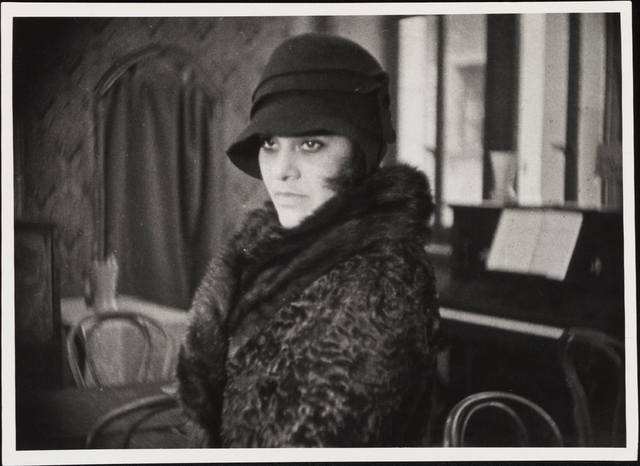
19 Eki AFRICAN-AMERICAN WOMEN IN THE SILENT FILM INDUSTRY
by Kyna Morgan, Aimee Dixon
In the first decades of the twentieth century, five African-American women filmmakers helped to establish the US cinema industry and to better the representation of African-Americans on film. Hailing from different regions of the country, from Kansas City, Missouri, to Montclair, New Jersey, to Washington DC, they were geographically separated but united by a belief that the motion picture was socially transformative. Some tried to make a living for a short time from their film work while others seemed to have made one motion picture and disappeared from the field altogether. These women wanted to present a vision of the life of African Americans that was authentic, and in attempting this they were often entrepreneurial, arranging theatrical exhibition and distribution or taking film prints directly to audiences themselves in order to reach more communities. Apart from their risk-taking and trailblazing, their efforts to shift the prevailing view of African Americans is what binds them, marking their achievements as emblematic of a movement to establish the validity of the lives of African Americans. While the recent wave of interest in African-American director-producer Oscar Micheaux and the “race movie” makers of his time has helped to confirm and affirm the existence of black independent filmmakers in the silent era, the resulting research largely uncovered only the men involved.
Taking a second look, however, we discover not just African-American giants but women involved with their husbands in creative teamwork—best exemplified by Micheaux’s second wife, Alice B. Russell, and Eslanda Robeson, the wife of singer, stage and screen actor, and activist Paul Robeson.
Who was the “FIrst” AfrIcan AmerIcan Female FIlmmaker?
However, with the exception of Eloyce King Patrick Gist, who has received some critical attention for her work making 16mm educational religious shorts and Zora Neale Hurston, known primarily because of her work as a writer and ethnographer, African-American women filmmakers have not come to the attention of historians. Yet in their own time the achievement and consequently the attribute “first woman filmmaker” was important to the African-American press. The press claimed on separate occasions a year apart that both Tressie Souders and Maria P. Williams, also both from Kansas City, Missouri, should be acknowledged as the “first.”
It could also be argued that the first female filmmaker of African-American descent was Madame E. Touissant Welcome, born Jennie Louis Van Der Zee, sister of famed photographer James Van Der Zee. She directed a film of black soldiers from World War I, part of a twelve-part documentary produced in partnership with her husband, E. Touissant Welcome, for the Touissant Motion Picture Exchange (Dixon 20). Thus, in retrospect we see not just individuals but a group of women, all breaking barriers of different kinds.
That the black community pinned their hopes on such women is suggested by the title of a 1921 article in The Competitor: “Our Growing Importance in the Amusement World.” Here, author Birdie Gilmore is mentioned as having had her Jungle God produced by the Delsarte Film Company and reference is made to another story accepted by the Metro Company (38). In 1915, the Chicago Defender mentions the “three-reel drama” Shadowed by the Devil in their section “Among the Movies” (5). The feature-length Shadowed by the Devil was the only product of Chicago’s Unique Film Company, which may have been founded by husband and wife producers. Mrs. M. Webb is the source of the original story for the film directed by her husband, Miles M. Webb (Sampson, 183). Considered together, Tressie Souders, Maria P. Williams, Eloyce King Patrick Gist, Alice B. Russell, Eslanda Robeson, Mrs. M. Webb, Birdie Gilmore, Madame E. Touissant Welcome, and Zora Neale Hurston all deserve recognition and a firm place in the history of silent cinema.
DrusIlla Dunjee Houston’s 1902 Answer to DIxon and GrIffIth
Drusilla Dunjee Houston, who wrote a screenplay she titled “Spirit of the South: The Maddened Mob,” should also be added to this group as an African-American woman who wanted to make a difference in the era of the silent film. Houston’s screenplay, most likely the earliest African-American response to Thomas Dixon and D. W. Griffith’s The Birth of a Nation (1915), but never produced as a motion picture, represents one woman’s almost decade-long documentation of the destructive race-based social ideas espoused by Thomas Dixon in his novels, staged plays, and later The Birth of a Nation. These ideas represented a violent social stratification taking root in the American West and throughout the country.
The recent repatriation to the US of 35mm prints of Oscar Micheaux’s silent-era Within Our Gates (1920) and Symbol of the Unconquered (1920), from archives in Spain and Belgium respectively, has helped to revive historical interest in early African-American independent filmmaking, as documented in the Oscar Micheaux and His Circle touring catalogue (xxiii). These fortunate discoveries have also inspired new hope that more motion pictures, if only in fragments, may be found. We continue to search for clues to the existence of other “lost” titles as well as evidence that helps us to fill in the sketchy figures of these women who took up producing, acting, directing, and writing in an earlier age of institutionalized racism.
This article is taken from WFPP official website.


